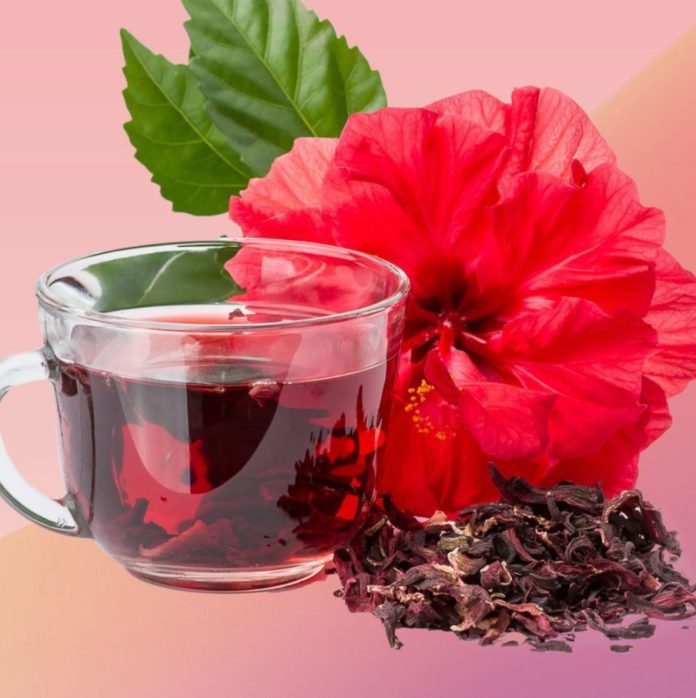Hibiscus tea, with its vibrant crimson hue and tangy flavor, is more than just a beautiful beverage; it’s a delightful infusion packed with health benefits. Originating from the hibiscus flower, this herbal tea has been enjoyed in various cultures for centuries.
Known for its refreshing taste and rich nutrient profile, hibiscus tea can be served hot or cold, making it a versatile drink suitable for any season. Let’s explore how to craft this delightful infusion from fresh hibiscus flowers, ensuring you capture the essence of this wonderful plant.
Ingredients :
- Fresh hibiscus flowers (about 10-15 flowers, preferably organic)
- Water (4 cups)
- Sweetener (honey, agave syrup, or sugar, to taste)
- Citrus slices (lemon or lime, optional)
- Mint leaves (optional for garnish)
Preparation Steps
1. Gathering Fresh Hibiscus Flowers
Start by sourcing fresh hibiscus flowers. If you have access to a hibiscus plant, pick flowers in the morning when they are fully open. Choose flowers that are vibrant in color, free from blemishes, and have a pleasant fragrance. If you don’t have a plant, many health food stores or online retailers sell fresh or dried hibiscus flowers.
2. Preparing the Flowers
Once you have your flowers, rinse them gently under cool water to remove any dirt or insects. Remove the green calyx (the part at the base of the flower) and any leaves, as these can add bitterness to your tea. You can reserve the calyx to add to salads for a pop of color!
3. Boiling the Water
In a medium-sized saucepan, bring 4 cups of water to a rolling boil. As the water heats up, the anticipation builds for the vibrant infusion that is about to unfold.
4. Infusing the Flowers
Once the water reaches a boil, add the cleaned hibiscus flowers. Reduce the heat to a simmer and allow the flowers to steep for about 10-15 minutes. The longer you steep, the more intense the flavor and color will become. Stir occasionally, allowing the petals to fully release their properties into the water.
5. Straining the Tea
After the infusion time, remove the saucepan from heat. Carefully strain the tea through a fine mesh sieve or cheesecloth into a large pitcher, discarding the flower petals. At this point, the tea will be a beautiful deep red, reminiscent of ruby red wine.
6. Sweetening Your Brew
While the tea is still warm, add your preferred sweetener. Honey or agave syrup blends beautifully with the tartness of hibiscus. Adjust the sweetness to your liking, keeping in mind that hibiscus naturally has a tangy flavor that may not require much added sugar.
7. Chilling or Serving Hot
If you prefer your hibiscus tea chilled, let it cool to room temperature, then refrigerate it for a few hours. Serve over ice with a slice of lemon or lime for an extra citrusy kick. If you’re enjoying it warm, pour it into a mug and savor the comforting aroma and flavor.
8. Garnishing
For an elegant touch, garnish your glass or mug with fresh mint leaves or additional citrus slices. This not only enhances the visual appeal but also adds a refreshing note to your drink.
Health Benefits of Hibiscus Tea
Hibiscus tea is not only delicious but also brimming with health benefits. Rich in antioxidants, it supports overall health and well-being. Some studies suggest that hibiscus tea may help lower blood pressure and cholesterol levels, making it a heart-friendly choice. Additionally, it is known for its diuretic properties, aiding in digestion and hydration.
Conclusion :
Crafting your own hibiscus tea from fresh flowers is not only a rewarding culinary adventure but also a celebration of the vibrant flavors and health benefits that nature provides. As you sip on this refreshing infusion, you’re indulging in a beverage that has been cherished across cultures for centuries. The deep crimson color and tangy taste of hibiscus tea are a feast for the senses, making it a perfect companion for gatherings or a moment of relaxation at home.
Moreover, hibiscus tea offers numerous health benefits that make it a thoughtful addition to your daily routine. Its high antioxidant content helps combat oxidative stress, while its potential to support heart health and regulate blood pressure is backed by emerging research. The diuretic properties of hibiscus can also assist in maintaining hydration, especially during warmer months, making it a fantastic choice for quenching your thirst.
Incorporating hibiscus tea into your life goes beyond enjoying a delicious drink; it’s about embracing a lifestyle that values wellness and natural ingredients. Whether you choose to enjoy it hot, iced, or even mixed into cocktails or smoothies, the versatility of hibiscus tea allows you to experiment and create your own unique blends.
So, gather some fresh hibiscus flowers, invite friends over, and share this delightful brew. Let the vibrant color and refreshing taste inspire conversation and connection. Cheers to your health and to the beauty of nature, all encapsulated in a simple cup of hibiscus tea!
Source of the picture : Barbara O’Neill










